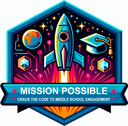English Language Arts (ELA)
1. Group Projects:
Collaborative Storytelling: Have students work in groups to write and illustrate a short story, with each member contributing different sections. They can also perform a dramatic reading or create a digital presentation to showcase the final product.
Literary Analysis Project: Assign groups different literary works or chapters, and have them analyze themes, characters, or symbolism. Each group can then present their findings to the class, fostering discussion and peer learning.
Debate & Discussion: Divide students into groups to debate themes, characters, or moral dilemmas within a book they're reading. This promotes critical thinking and strengthens their argumentation and public speaking skills.
2. Interactive Learning:
Literature Circles: Create small groups of students, each assigned a role (e.g., summarizer, questioner, connector, or vocabulary enricher). As they read together, they can actively discuss the text and complete their roles in each session, making reading more engaging.
Interactive Reading Journals: Allow students to use digital platforms (e.g., Padlet or Google Docs) to respond to reading prompts, post questions, or comment on classmates' responses. This encourages both reflection and collaboration.
Interactive Quizzes or Kahoot! Games: After reading a section of a book, use a quiz game or trivia platform like Kahoot! to test students' comprehension and make reviewing more fun and competitive.
3. Self-Paced Activities:
Choice Boards: Create a "menu" of activities related to a reading unit or a specific skill (e.g., writing, grammar, vocabulary). Students can select activities that they feel most interested in or that challenge them the most, allowing for personalized learning.
Reading Response Journals: Let students respond to their readings at their own pace. For instance, they could have a set of questions to answer after each chapter or activity that they can complete during their independent reading time.
Flipped Classroom: Assign video lessons or reading assignments for homework, and use class time for students to engage in group discussions or activities based on the content. This allows students to learn at their own pace while using class time for deeper learning.
4. Brain Teasers:
Word Puzzles & Vocabulary Challenges: Introduce brain teasers like crossword puzzles or word searches that focus on vocabulary from the books students are reading. This can serve as a fun, low-pressure way to reinforce new words.
Riddle or Poetry Challenge: Create riddles that students need to solve using their knowledge of literary terms or poems. You could also challenge them to write a riddle or a poem that incorporates literary elements they've learned in class.
Literary Charades: Use charades to act out different literary elements (e.g., metaphors, symbols, character traits) or famous scenes from the books they're reading. It’s a fun way to reinforce concepts and make learning interactive.
By combining group collaboration, interactive and self-paced activities, and brain teasers, ELA teachers can create an engaging classroom environment where students not only deepen their understanding of language arts concepts but also enjoy the learning process.
